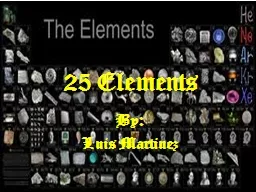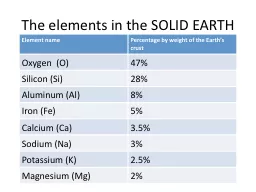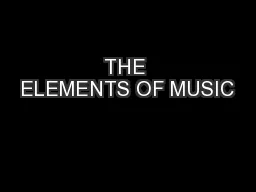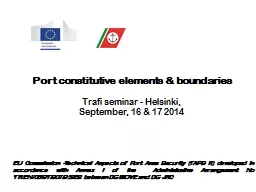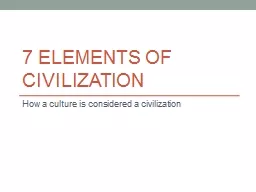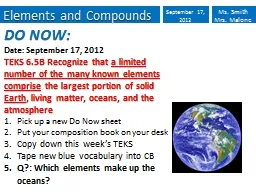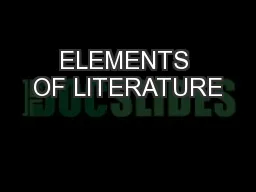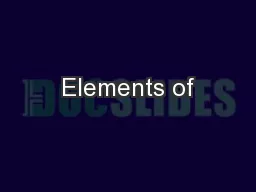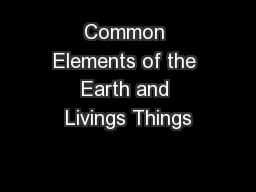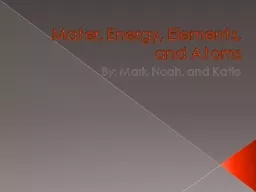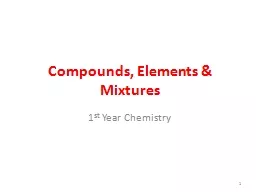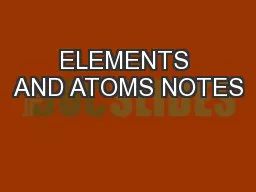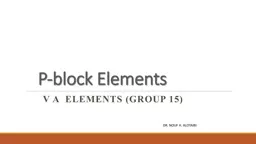PPT-25 Elements
Author : marina-yarberry | Published Date : 2016-09-08
By Luis Martinez 1 Hydrogen Hydrogen is the lightest element It is by far the most abundant element in the universe and makes up about 90 of the universe by
Presentation Embed Code
Download Presentation
Download Presentation The PPT/PDF document "25 Elements" is the property of its rightful owner. Permission is granted to download and print the materials on this website for personal, non-commercial use only, and to display it on your personal computer provided you do not modify the materials and that you retain all copyright notices contained in the materials. By downloading content from our website, you accept the terms of this agreement.
25 Elements: Transcript
By Luis Martinez 1 Hydrogen Hydrogen is the lightest element It is by far the most abundant element in the universe and makes up about 90 of the universe by weight Hydrogen as water H2O is absolutely essential to life and it is present in all organic compounds Hydrogen is the lightest gas. Jake Blanchard. Spring 2008. Beam Elements. These are “Line Elements,” with. 2 nodes. 6 DOF per node (3 translations and 3 rotations). Bending modes are included (along with torsion, tension, and compression). Element name . Percentage by weight of the Earth’s crust. Oxygen . (O). 47%. Silicon (Si). 28%. Aluminum (Al). 8%. Iron (Fe). 5%. Calcium (Ca). 3.5%. Sodium (Na). 3%. Potassium (K). 2.5%. Magnesium (Mg). FORM. FORM is the . structure. of a composition, the . frame. upon which it is constructed. . Form is based upon . repetition, contrast. and . variation. . . Certain specific forms include sonata-allegro form, . Trafi. . seminar - Helsinki, . September, 16 & 17 2014. EU Commission -Technical . Aspects of Port Area . Security (TAPS II) developed in . accordance with Annex I of the . Administrative . Arrangement No . How a culture is considered a civilization. What is Civilization?. The Oxford Dictionary gives one definition as . "the act or process of civilizing or being civilized." . The other definition that the Oxford Dictionary gives is: . September . 17, . 2012. . Ms. Smith. Mrs. Malone. DO NOW:. Date. : . September 17, 2012. TEKS 6.5B Recognize that . a limited number of the many known elements comprise. the largest portion of solid . PLOT. WWW.DRWRITE.COM. CONFLICT. CHARACTERS. SETTING. POINT OF VIEW. LANGUAGE. Short Stories. Novels. Plays. Screenplays. Poetry. These six elements form the basis of all forms of literature, . but their importance varies with the type of literature.. Shakespearean Tragedy. The Globe Theatre. Shakespeare’s plays were first performed at the Globe Theatre in London. . The original Globe burned down in 1613. . 3 stories high; wealthy theatre-goers would sit in these covered areas, with the most expensive seats highest up. . Atmosphere. Crust. Ocean. Livings Things. 1. Elements found in all 4 places.. 2. Elements found in 3 out of 4 places.. Directions: . Cut . . each card out and sort them in the following groups.. Hydrogen. By: Mark, Noah, . and Katie. Definitions. Matter- Anything that occupies . soace. and has mass . Energy- the ability to do work. Elements- any of the building blocks of matter, oxygen, hydrogen, carbon, for example. 1. st. Year Chemistry. 1. Elements. Elements & Atoms. All substances are made up from tiny particles called atoms. When a substance is made up of only one type of atom it is called an element. The element iron is made up of iron atoms, the element hydrogen is made up of hydrogen atoms, the element sulphur is made up of sulphur atoms and so on.. Matter and Atoms. Matter is anything that takes up space and has mass. There are 4 phases of matter solid, liquid, gas, and plasma.. All matter is made of atoms.. Atoms are the building blocks of matter, sort of how bricks are the building blocks of houses.. Process Cost Elements. Conditions: . You are a Budget Analyst with access to a computer, the GFEBS training database, applicable GFEBS references, and awareness of Operational Environment (OE) variables and actors. Dr. . Nouf. H. Alotaibi. P-block Elements- V A elements. General trend. Electron configurations ns. 2. np. 3. (n is the period number). The s orbital is completely filled and p orbital is half filled which makes them stable..
Download Document
Here is the link to download the presentation.
"25 Elements"The content belongs to its owner. You may download and print it for personal use, without modification, and keep all copyright notices. By downloading, you agree to these terms.
Related Documents

